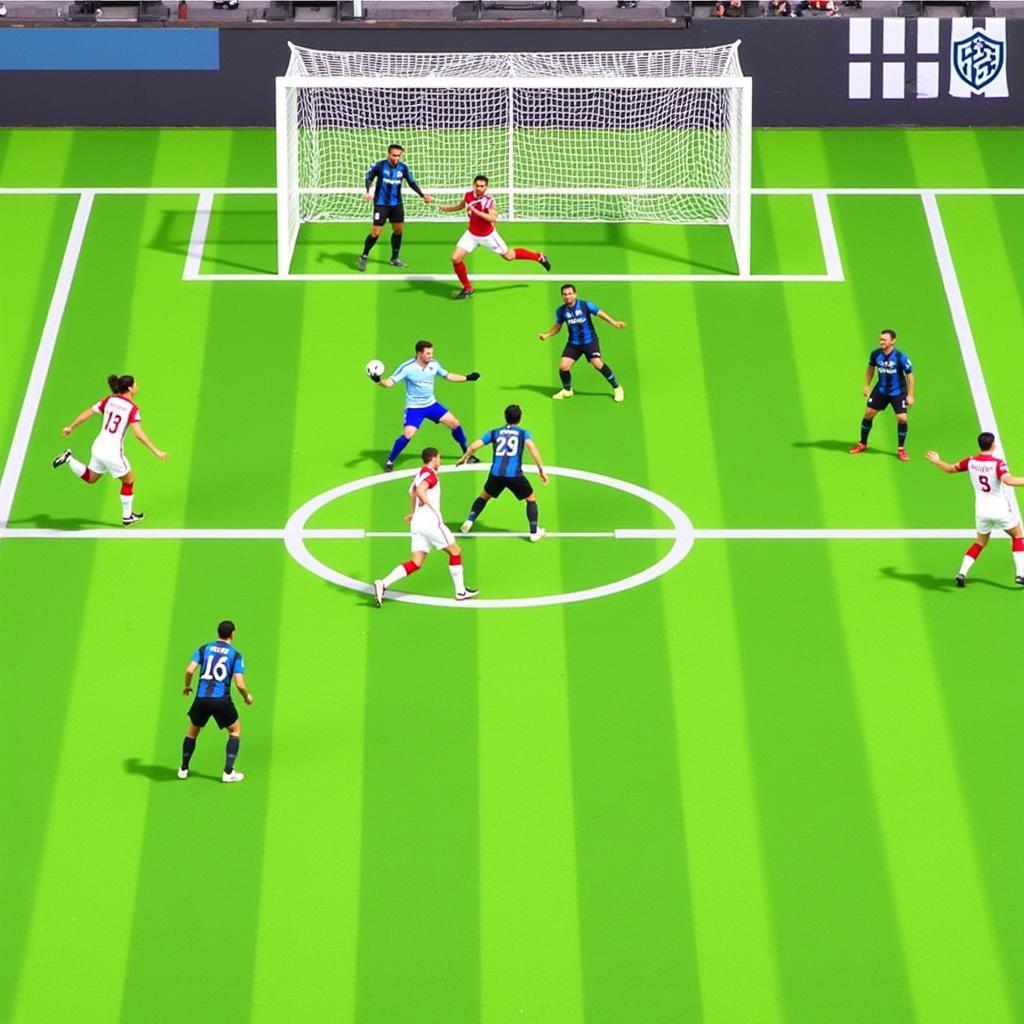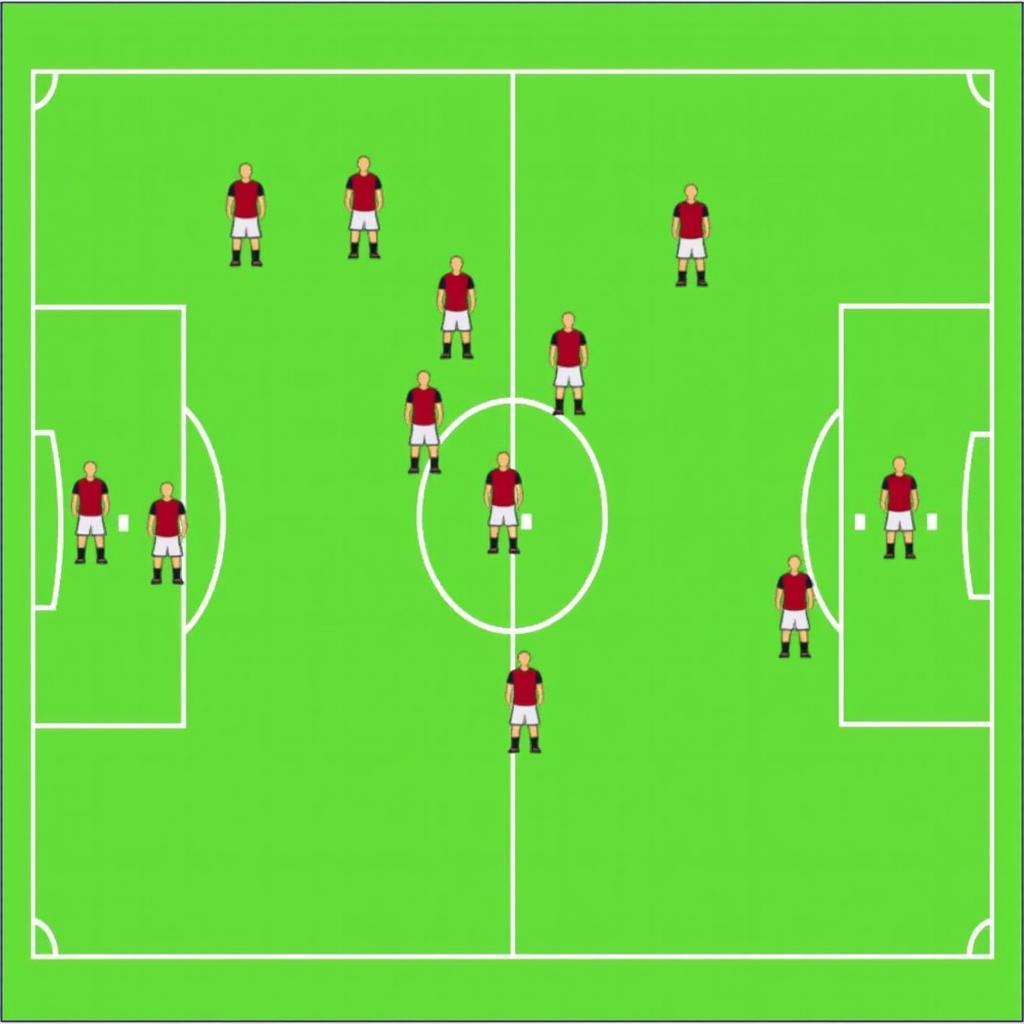The “Danger Condition Formula” in football refers to specific game situations that drastically increase the likelihood of conceding a goal. Recognizing and mitigating these situations is crucial for any team aiming to succeed. This article dives deep into the concept of danger condition formula, exploring its various aspects and how it impacts a team’s defensive strategy.
What Constitutes a Danger Condition Formula?
Several factors contribute to a danger condition formula, and understanding them allows coaches and players to anticipate and react effectively to high-risk scenarios. These scenarios can range from set pieces to open play and require a different defensive approach. Let’s break down some key components:
- Set Pieces: Corners, free-kicks near the box, and throw-ins in the attacking third all present significant danger. The opposition’s ability to deliver the ball accurately into the box, combined with the physical presence of their players, creates a high probability of scoring.
- Transitions: The period immediately following a turnover, when the defensive structure is disorganized, is another prime example. A quick counter-attack can exploit gaps in the defense and lead to a dangerous one-on-one situation or an overload in the attacking third.
- Individual Errors: Defensive lapses in concentration, poor positioning, or missed tackles can instantly create a danger condition. These mistakes can gift the opposition a clear scoring opportunity.
- Loss of Possession in Dangerous Areas: Losing the ball in your own half, particularly near the penalty area, significantly increases the risk of conceding. The opposition is already close to goal and can capitalize on the turnover quickly.
- Numerical Disadvantage: Being a man down, even temporarily, due to a sending off or injury, creates a significant disadvantage. This often forces the team to reshuffle, leaving gaps in the defense that the opposition can exploit.
 Danger Condition Formula in Set Pieces
Danger Condition Formula in Set Pieces
Tactical Approaches to Mitigating Danger
Understanding the components of the danger condition formula is only half the battle. Implementing effective strategies to counteract these scenarios is equally crucial.
- Organized Defending: Maintaining a compact defensive shape, particularly in central areas, restricts the space available to the opposition and reduces the likelihood of them creating scoring chances.
- Communication: Clear and concise communication between defenders is essential. Calling out runners, marking assignments, and warning teammates about potential threats can prevent defensive breakdowns.
- Pressing Triggers: Implementing a coordinated pressing strategy, with defined triggers for when to engage the opposition, can help disrupt their build-up play and force turnovers in less dangerous areas.
 Danger Condition Formula in Transitions
Danger Condition Formula in Transitions
Recognizing Patterns and Predicting Danger
Coaches often analyze opposition teams to identify patterns in their play that lead to danger conditions. This allows them to prepare their team to anticipate and react effectively to these specific threats. For example, if a team is known for their strong aerial ability at set pieces, focusing on winning aerial duels becomes a priority.
- Individual Player Analysis: Focusing on the strengths and weaknesses of key opposition players can further enhance the team’s ability to manage danger. If a particular winger is known for their pace and dribbling skills, assigning a defender with similar attributes to mark them can help neutralize the threat.
- Adaptability: In-game adjustments are often necessary. If the opposition is consistently exploiting a particular weakness in the defense, the coach might switch formations, change player roles, or adjust the team’s pressing strategy.
 Danger Condition Formula in Numerical Disadvantage
Danger Condition Formula in Numerical Disadvantage
Conclusion: Mastering the Danger Condition Formula
Understanding and effectively managing the “danger condition formula” is fundamental to defensive success in football. By recognizing the various factors that contribute to these high-risk situations and implementing appropriate tactical approaches, teams can significantly reduce their vulnerability to conceding goals and increase their chances of winning matches. Mastering this aspect of the game requires continuous analysis, adaptation, and a commitment to disciplined and organized defending.
Need further assistance? Contact us at Phone Number: 0909802228, Email: doibongda@gmail.com or visit our office at 101 Đ. Lý Chiêu Hoàng, Phường 10, Quận 6, Hồ Chí Minh, Việt Nam. We have a 24/7 customer support team.